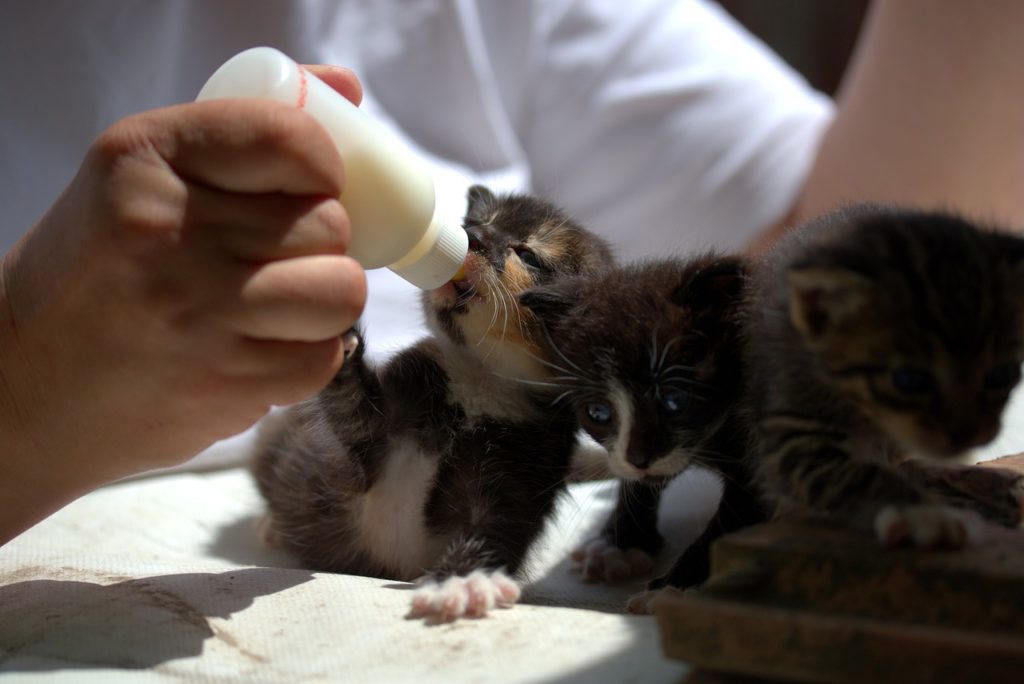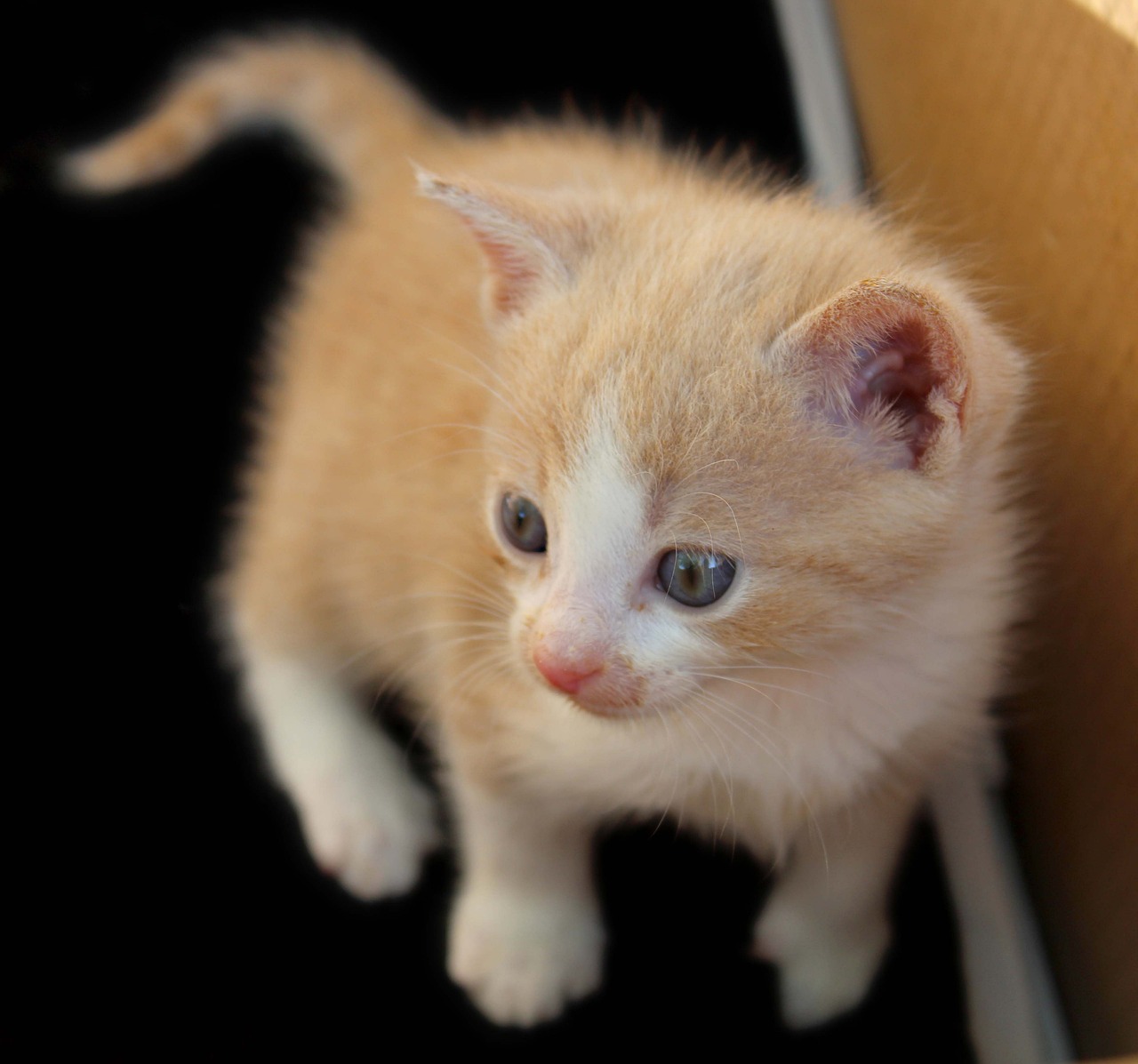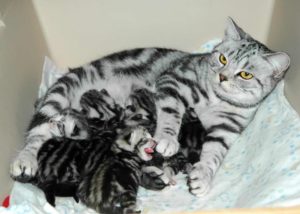
Photo by infinityharmony7 on Pixabay
Are you a new pet parent or a foster caregiver for kittens? It’s essential to understand the developmental milestones and care requirements of these adorable furballs at different stages of their lives. In this comprehensive guide, we will walk you through the step-by-step process of determining a kitten’s age and provide valuable insights into their growth, behavior, and care needs. So, let’s embark on this exciting journey of understanding kittens from birth to adoption age!
Newborn Kittens: The First Week of Life
When kittens are born, they are incredibly fragile and dependent on their mother’s care. Determining their age accurately during this period can be a bit challenging, but there are certain physical characteristics and behaviors you can observe.
Physical Characteristics
- Newborn kittens have their eyes closed, ears folded, and a visible umbilical cord.
- Their nose and paws may appear pink in color.
- At this stage, kittens cannot see or hear and rely on their sense of smell and seeking warmth and comfort to navigate their surroundings.
- The average weight of a newborn kitten ranges from 50 to 150 grams.
Care Guidelines for Newborn Kittens
Providing the right environment and care for newborn kittens is crucial for their survival and healthy development. Here are some essential tips to follow:
- Maintain Optimal Temperature: Newborn kittens cannot regulate their body temperature, so it’s essential to provide a gentle heat source to keep them warm and stable. The ideal temperature for their environment is between 85 and 90 degrees Fahrenheit.
- Feeding Schedule: Orphaned newborn kittens should be fed every 2 hours, including overnight. You can choose to syringe feed or bottle feed them at this age. Remember to feed them slowly and with extreme caution due to their lack of a gag reflex.
- Stimulation for Elimination: Newborn kittens need assistance to go to the bathroom. Gently stimulate their genital area after each feeding to encourage urination and defecation.
“The first 48 hours of a kitten’s life are a critical period for obtaining maternal antibodies through nursing.” – Kitten Lady
During the first two days, nursing kittens receive immunity-boosting colostrum from their mother, which helps them fight off illnesses. If a kitten doesn’t receive colostrum, it becomes more susceptible to diseases and infections.

One Week Old Kittens: Eyes Opening and Steady Weight Gain
As kittens reach the one-week mark, some noticeable changes occur in their physical appearance and behavior. Let’s explore what to expect during this stage.
Physical Characteristics
- One-week-old kittens still have their umbilical cord, but it may become dry and ready to fall off around 4-5 days old.
- Their eyes remain closed, but the ear canals start to slowly open.
- The average weight of a one-week-old kitten should double compared to their birth weight.
Care Guidelines for One-Week-Old Kittens
As one-week-old kittens continue to grow, their care requirements evolve. Here’s what you need to know:
- Maintaining the Right Temperature: Similar to newborn kittens, one-week-old kittens still require a warm environment. Keep the temperature around 85 degrees Fahrenheit.
- Feeding Schedule: Orphaned one-week-old kittens should be bottle-fed every 2-3 hours, including overnight. Remember to stimulate them to go to the bathroom after each feeding.
- Eye Care: Avoid the temptation to pry open a kitten’s eyes. They will naturally open when the time is right. Be patient and let nature take its course.
Two Weeks Old Kittens: Developing Senses and Motor Skills
At around two weeks old, kittens begin to show more signs of development, including the opening of their eyes and ears. Let’s dive into the details.
Physical Characteristics
- Two-week-old kittens’ eyes start to slowly open, revealing their baby blue color. However, avoid attempting to pry them open manually.
- Their ears become more noticeable and point upwards.
- The average weight of a two-week-old kitten ranges from 250 to 350 grams.
Care Guidelines for Two-Week-Old Kittens
As kittens enter their second week of life, their care routine should be adjusted accordingly. Here are some important guidelines to follow:
- Temperature Control: Although two-week-old kittens are becoming more active, they still require a warm environment. Maintain the temperature around 80 degrees Fahrenheit.
- Feeding Schedule: Orphaned two-week-old kittens should be bottle-fed every 3-4 hours, including overnight. Continue stimulating them to go to the bathroom after each feeding.
- Deworming: At two weeks old, it is safe to begin deworming the kittens. Consult your veterinarian for the appropriate deworming treatment.
“Two-week-old kittens will be wobbly on their feet and attempting to develop coordination and movement.” – Kitten Lady
Three Weeks Old Kittens: Teething and Exploring
As kittens reach the three-week milestone, they become more active and curious about their surroundings. Let’s explore the changes they go through during this stage.
Physical Characteristics
- Three-week-old kittens start to develop their first teeth, with the tiny incisors emerging from their gums.
- Their ears point upwards, resembling those of a miniature cat.
- The average weight of a three-week-old kitten ranges from 350 to 450 grams.
Care Guidelines for Three-Week-Old Kittens
With their increased mobility and growing teeth, three-week-old kittens require specific care and attention. Consider the following guidelines:
- Temperature Adjustment: As kittens become more active, they may stray away from the heat source. Maintain the environment around 75 degrees Fahrenheit.
- Feeding Schedule: Orphaned three-week-old kittens should be bottle-fed every 4-5 hours, including overnight. During this period, they transition from being stimulated to go to the bathroom to learning how to use the litterbox.
“Three-week-old kittens will be walking, exploring their surroundings, and even beginning to explore the litter box.” – Kitten Lady
Four Weeks Old Kittens: Developing Motor Skills and Canine Teeth
As kittens reach the four-week mark, their growth and development continue to progress. Let’s delve into the key characteristics and care guidelines for this stage.
Physical Characteristics
- Four-week-old kittens start to develop their canine teeth, which are longer and located next to the incisors.
- They become more confident in exploring their surroundings, developing coordination, and engaging in playful behaviors.
- The average weight of a four-week-old kitten ranges from 350 to 450 grams.
Care Guidelines for Four-Week-Old Kittens
At four weeks old, kittens become more independent and require a slightly different care routine. Here are some essential guidelines:
- Temperature Considerations: While they still appreciate warmth, four-week-old kittens may use the heat source only when resting. Maintain the environment comfortably warm, but not colder than 70-75 degrees Fahrenheit.
- Feeding Schedule: Orphaned four-week-old kittens should be bottle-fed every 5 hours, including overnight. By this age, most kittens will be using the litterbox consistently.
Five Weeks Old Kittens: Introducing Wet Food and Weaning
At five weeks old, kittens experience significant milestones in their development, particularly in terms of their teeth and diet. Let’s dive into the details.
Physical Characteristics
- Five-week-old kittens continue to develop their teeth, with the emergence of premolars.
- Their eye color begins to change from baby blue to their permanent adult eye color, such as grey, green, or yellow.
- The average weight of a five-week-old kitten ranges from 550 to 650 grams.
Care Guidelines for Five-Week-Old Kittens
As kittens approach the five-week mark, it’s time to introduce them to the weaning process and wet food. Here are some important guidelines to follow:
- Feeding Transition: At five weeks old, kittens should be gradually introduced to wet food as they start to develop their teeth. However, ensure they are maintaining a healthy weight and body condition during this sensitive transition.
- Feeding Schedule: Orphaned five-week-old kittens, if healthy, may be introduced to weaning and should receive wet food every 5-6 hours. Make sure to provide access to food and water at all times.
Six Weeks Old Kittens: Perfecting Weaning and Vaccination
At six weeks old, kittens continue to grow and develop, fine-tuning their weaning process and receiving essential vaccinations. Let’s explore what to expect during this stage.
Physical Characteristics
- Six-week-old kittens should have their deciduous (baby) teeth fully emerged.
- They are typically perfecting their weaning onto wet food and becoming more independent in their eating habits.
- The average weight of a six-week-old kitten ranges from 650 to 750 grams.
Care Guidelines for Six-Week-Old Kittens
As kittens reach the six-week milestone, their care routine focuses on their nutritional needs and vaccination schedule. Consider the following guidelines:
- Weaning Progress: By six weeks old, most kittens should be eating wet food independently. Ensure they have ample access to wet food and provide water at all times.
- Vaccination: Six weeks is a standard age for kittens to receive their first FVRCP vaccine. Consult your veterinarian for the appropriate vaccination schedule and any additional vaccines required.
Seven Weeks Old Kittens: Fully Weaned and Eye Color Transition
At seven weeks old, kittens begin to showcase their individuality, especially through their eye color and eating habits. Let’s explore the key characteristics and care guidelines for this stage.
Physical Characteristics
- Seven-week-old kittens should have fully transitioned to wet food and be fully weaned.
- Their eye color starts to transition from baby blue to their permanent adult eye color, such as grey, green, or yellow.
- The average weight of a seven-week-old kitten ranges from 750 to 850 grams.
Care Guidelines for Seven-Week-Old Kittens
As kittens become fully weaned, their care routine focuses on providing a balanced diet and ensuring their overall well-being. Follow these guidelines:
- Balanced Diet: Provide ample wet food for seven-week-old kittens, as they should be fully weaned at this stage. Make sure to provide access to water and food at all times.
- Observing Eye Color: Pay attention to the color transition in their eyes, as it indicates their age. Kittens with grey, green, or yellow eyes are likely seven weeks or older.
Eight Weeks Old Kittens: Independence and Adoption
At eight weeks old, kittens are ready to embark on their journey to their forever homes. Let’s explore the final stage of their early development.
Physical Characteristics
- Eight-week-old kittens should have their permanent adult eye color.
- They become more independent in their eating habits, relying less on their mother or caretaker for nourishment.
- Kittens who are eight weeks old and weigh at least 2 pounds are typically ready for spaying/neutering and adoption.
- The average weight of an eight-week-old kitten ranges from 850 to 950 grams.
Care Guidelines for Eight-Week-Old Kittens
As kittens reach eight weeks old, their care routine revolves around their transition to their forever homes. Consider these guidelines:
- Feeding Independence: Most eight-week-old kittens should be eating wet food independently. Provide access to ample wet food and ensure they have access to water at all times.
- Spaying/Neutering and Adoption: Kittens who are eight weeks old and weigh at least 2 pounds are typically ready for spaying/neutering. Consult your veterinarian for the appropriate timing. Afterward, they can be adopted into loving forever homes.
Conclusion
Understanding a kitten’s age and development milestones is crucial for providing the best care possible. From their newborn stage to eight weeks old, kittens go through significant changes in their physical appearance, behavior, and nutritional needs. By following the guidelines outlined in this comprehensive guide, you can ensure that your kitten receives the appropriate care, nutrition, and love at each stage of their early life. Enjoy this precious time with your adorable furry companion as they grow into their unique personalities!
“Caring for kittens requires patience, love, and attention to their individual needs at each stage of their development.” – Kitten Lady



